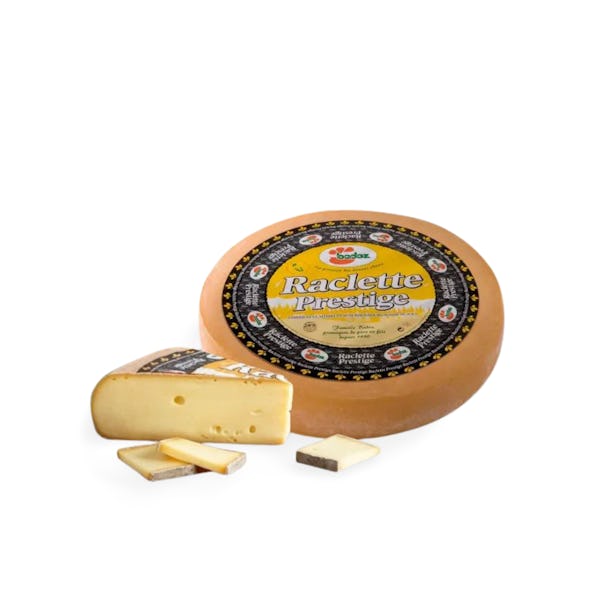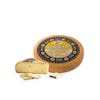Raclette Du Jura Semi-Hard Cow's Milk Unpasteurized
Its name comes from the French word “racler,” which meaning “to scrape.” Raclette is a semi-soft cheese with an orangey brown rind. Its pate is pale yellow, creamy, solid, and silky.
It’s produced with raw cow’s milk, which gives it a distinct richness. Unlike some cheeses, it has a very fragrant, fruity, and pleasant fragrance. This winter cheese is creamy and nutty on the taste, with undertones of sweetness.
The traditional method of eating Raclette is the best and most popular—melting it and spreading it over various foods.
It’s a really social cuisine that’s best eaten with friends and family. Set the table for a leisurely supper with the Raclette. Serve alongside roasted potatoes, veggies, cornichons, and cured meats. We recommend our prosciutto di parma, coppa, or bresaola.
Raclette is a winter cheese that is popular in the Swiss Alps and other ski areas. Shepherds used to transport their cows up and down hillsides to and from pastures. They required that the food they carried with them be somewhat inexpensive and not quickly spoilt. They delivered cheese and potatoes. While the potatoes were roasting over the fire, a large chunk of cheese was placed near the heat and began to melt. The melted cheese would then be scraped onto the potatoes. It was a simple, inexpensive lunch that was satisfying, healthy, and delightful.
Storage Instructions
Cheeses (except brined ones in jars) should be stored in the crisper or the butter drawer of a refrigerator, not on the shelves themselves. This is to help regulate their temperature and humidity levels—and prevents the formation of mold. Once opened, they should not be kept in their original packaging. Soft cheeses with delicate rinds need to breathe, so they are best placed in glass containers lined with paper towels to absorb extra moisture. Leave the lid open a tiny bit for air to circulate and don’t forget to write up a label with the date you first opened the package. Kindly pay attention to the best before date label when you receive your cheese. Consume prior to date indicated.






